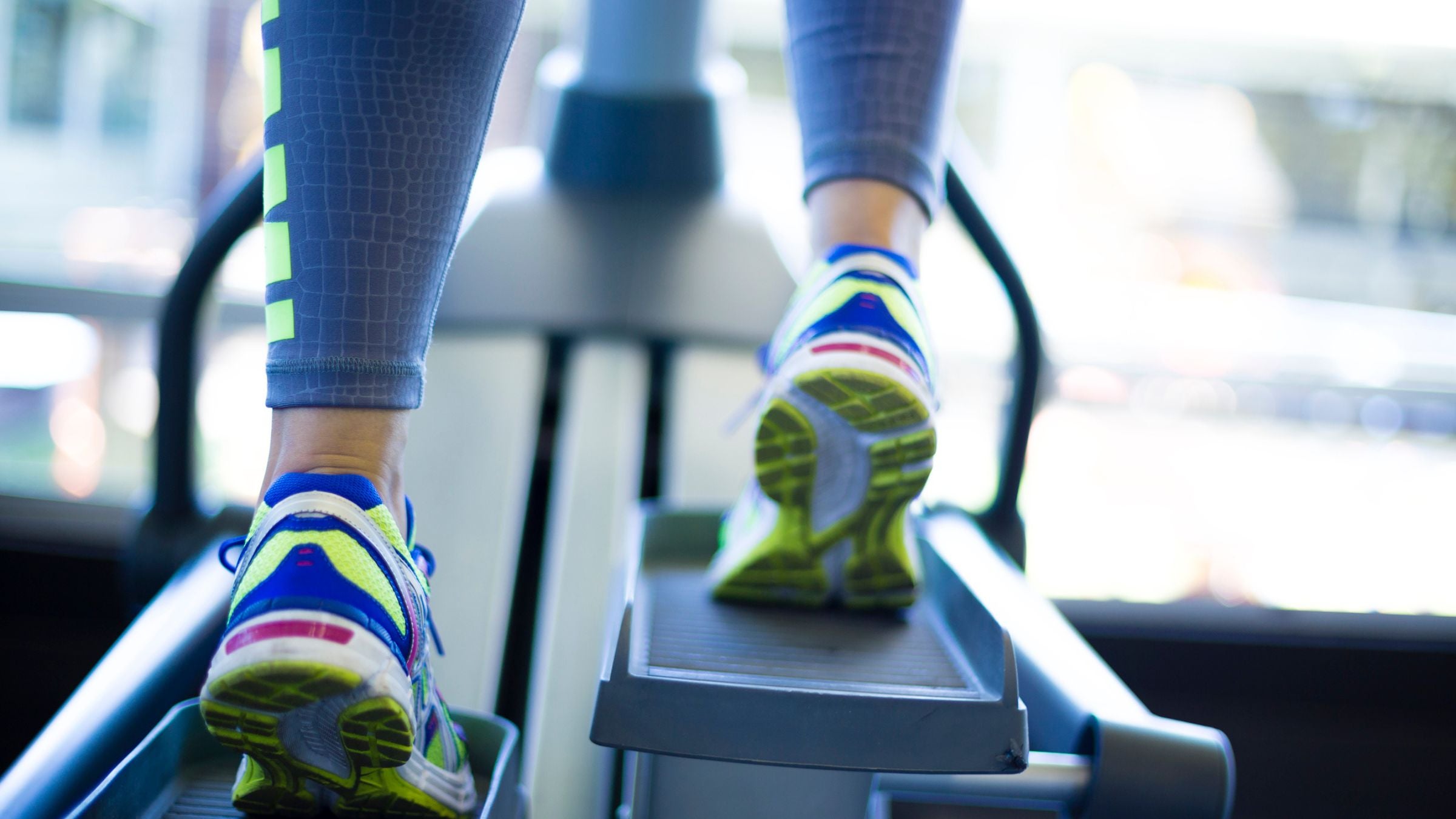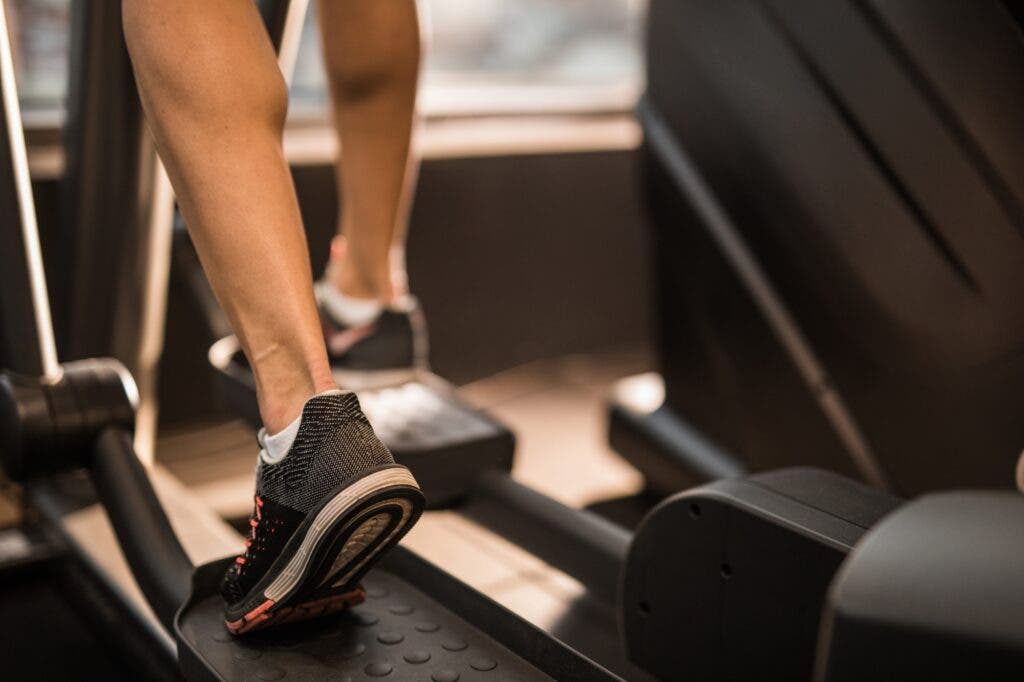Yes, The Elliptical Can Create Champions. Here’s How.

Here’s something you might not have thought about: You can add elliptical time on top of running, or to replace mileage, and there’s good evidence it will contribute to enhanced running fitness. In fact, there’s a decent body of research and case studies to back that up.
Last year, Natasha Wodak set the Canadian record in the marathon, running a 2:23:12 at age 40. Her Strava profile shows extra volume on the elliptical. Her coach, Trent Stellingwerff, said that Wodak “uses the elliptical 2 to 4 times/week proactively to add aerobic volume more safely,” resulting in 2 hours of extra aerobic load.
RELATED: Strava Data Confirms Women Are Smarter Racers
Aliphine Tuliamuk cited the elliptical as a benefit to her training prior to winning the Olympic Trials in the marathon in 2020. Tons of athletes use the Elliptigo, an upright version of a bike that has the added benefit of making sure users don’t take themselves too seriously. I would argue that the Elliptigo is one of the strongest paths toward personal enlightenment, because riding it in public may result in ego-death.
Thinking back to my own journey, I remember using the elliptical extensively in early 2014, as I came back from a hip injury. After I returned to running that year, I had my big breakthrough that culminated in being named the USATF Sub-Ultra Trail Runner of the Year. That’s right: the elliptical may have played a role in earning me a certificate. Certificates rule everything around me. Fancy, fancy paper y’all.
Elliptical Science for Runners
All of these examples are subject to selection bias. Take a talented athlete (or someone who is extremely motivated by certificates) and give them any training intervention, and you may wind up confusing correlation with causation. But while it’s close-to-impossible to connect elliptical training interventions with long-term outcomes, there is surprisingly robust evidence for the elite-athlete anecdotes.
A 2004 study in the Journal of Sports Medicine and Physical Fitness found that running, the elliptical, and the stair-climber all led to similar improvements when training volume and intensity were equivalent. That finding was duplicated by a 2021 study in the International Journal of Sport Nutrition and Exercise Metabolism. Another 2004 study, this one in the Journal of Exercise Physiology Online, found that the treadmill and elliptical produced similar maximal values in physiological variables during a VO2 max test.

And there could even be extra advantages to the elliptical. A 2010 study in the Journal of Strength and Conditioning Research had 18 athletes do 2 sub-maximal tests 15 minutes apart, with one on the treadmill and one on the elliptical. While VO2 and perceived exertion were the same for both, heart rate was 19 beats per minute higher on the elliptical (and energy expenditure was 10% higher, but it was a non-significant finding). That may indicate that the potential aerobic benefit could be greater than an equivalent effort run in some cases, particularly when using the arm levers actively, aligning with cross country skiing. A 2011 study compared the elliptical and the bike and found “Elliptical training demonstrated greater quadriceps activity and greater quadriceps/hamstrings coactivation than all other conditions.” That muscle activation could be even more beneficial in trail running, since uphills have a similar increased demand on the quads.
How To Use The Elliptical
After Wodak’s Canadian record and confirming with the research, we took the plunge: We bought an elliptical. (Precor, you owe her a commission, because WE GOT INFLUENCED.)
The elliptical seems like a wonderful way to add aerobic volume and intensity without the injury risk of running. It’s likely better than the bike on a 1:1 basis because it involves greater activation of the hips and hamstrings, due to the posture on the machine, while also allowing for arm-swing. It may be better than the stair-stepper, too, since its cadence is closer to running. You can add elliptical time on top of running, or to replace mileage, and there’s good evidence it will contribute to enhanced running fitness.
However, I don’t think that it’s as simple as adding a few minutes on the elliptical here and there. Not every elliptical workout is created equal.
RELATED: 5 Ways to Maintain Your Running Fitness When You Can’t Run
3 Elliptical Principles for Runners
I have three principles to impart when it comes to training on the elliptical. First, keep cadence high to better approximate running. That usually means 85-90 rpm at baseline, with lower resistance to make it sustainable. It feels difficult and awkward at first, but you get used to it across a couple sessions.
Second, alternate use of the moving arm levers and unmoving hand holds, which should make it easier to maintain that cadence. Personally, I like to put my hands lower on the levers to shorten the range of motion.
Third, pulse in intervals at higher resistance and cadence at 90+ rpm. Elliptical intervals can be absolutely devilish in ways that are difficult to describe. Here is a quick video of what it looks like when I do it:
- 10-15 min easy, 15 x 1 min fast/1 min float, 10-15 min easy
- 10-15 min easy, 1/2/3/4/3/2/1 min fast with 2 min float, 10-15 min easy
- 60-75 min easy/mod with 1 min faster every 5 min starting at 10 min
- 10-15 min easy, 10 x 2 min fast (90 seconds moderate, 30 seconds harder)/2 min float, 10-15 min easy
- 10-15 min easy, 6/5/4/3/2/1 min fast with 2 min float, 10-15 min easy
But you can get creative with it! Usually, when I talk about training, I am working from a decades-long evolution in theory and science. With the elliptical, each individual is making it up as they go along, to a certain extent. I am giddy to think about what we might learn over the coming years.